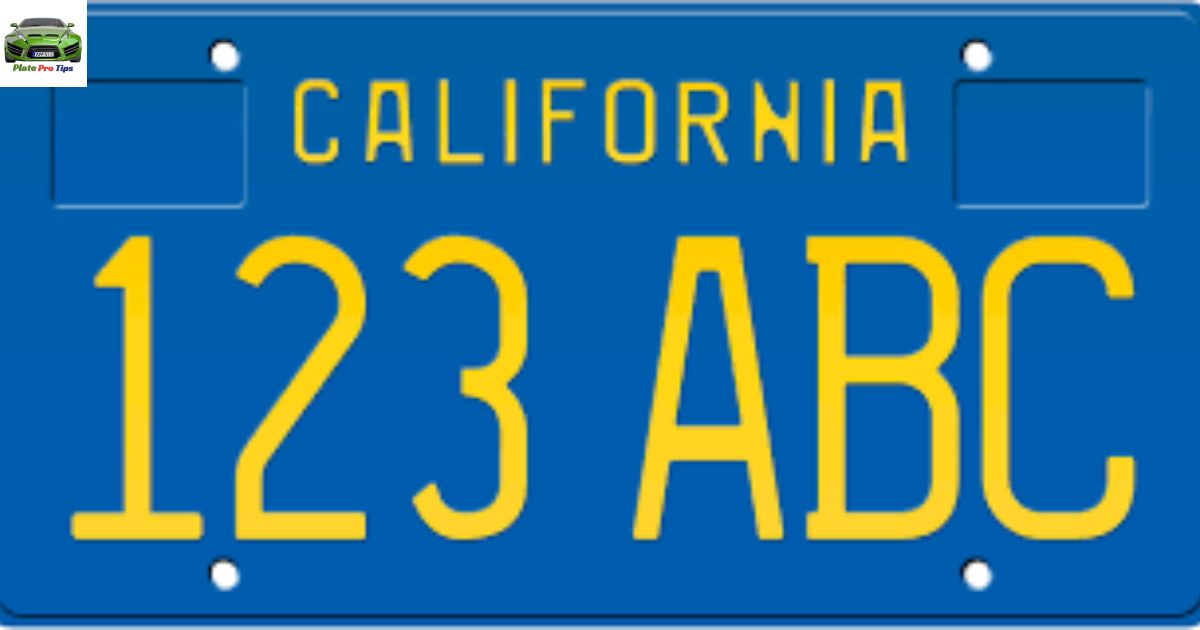A license plate is a metal or plastic plate attached to a vehicle. It displays a unique identification code. Issued by government agencies, it helps in vehicle identification. It’s mandatory for road legality.
Looking to add a touch of California flair to your ride? Look no further than the iconic California License Plate! With its vibrant colors and distinctive design, it’s more than just a registration tag – it’s a statement. Upgrade your vehicle’s look and showcase your Golden State pride today!
The California License Plate is a distinctive tag displayed on vehicles registered in California. It features vibrant colors and unique designs, often representing the state’s iconic landmarks or symbols. It serves as both a registration identifier and a symbol of pride for Californians.
Ensuring Your Plates are Valid
Driving with expired or invalid plates can lead to hefty fines and even vehicle impoundment in California. To avoid legal complications, it’s essential to stay on top of your registration renewal process. The California Department of Motor Vehicles (DMV) sends out renewal notices well before your registration expires, making it convenient to renew online, by mail, or in person.
When you receive your new registration stickers, ensure they are properly affixed to the designated areas on your license plates. Failure to display current stickers can result in citations, even if your registration is up-to-date. Consider using our California License Plate Wrap Kit for a secure and hassle-free application process.
License Plate Sizes
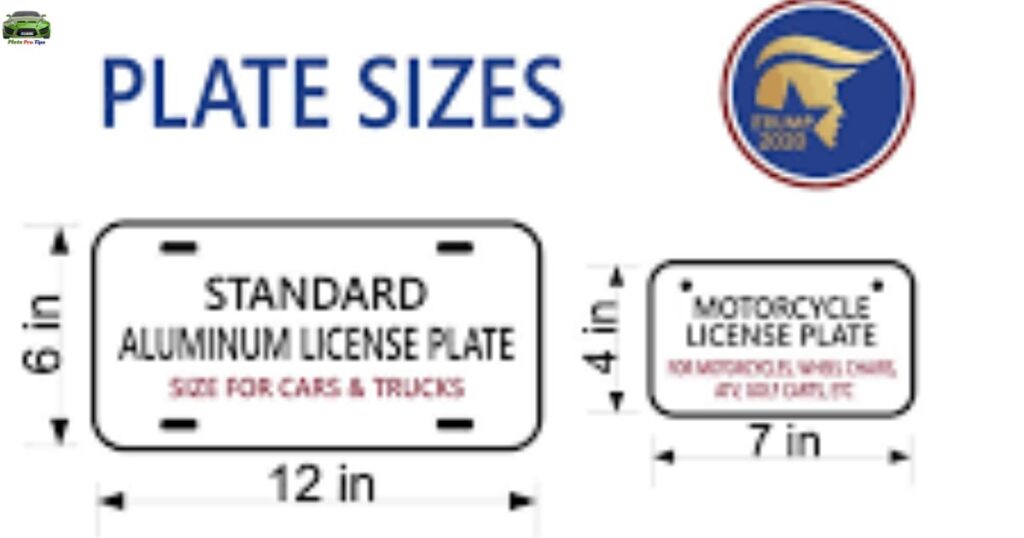
California offers various license plate sizes to accommodate different vehicle types. The standard passenger vehicle plate measures 12 inches by 6 inches, while larger plates are available for commercial vehicles, trailers, and motorcycles. Here’s a breakdown of the common plate sizes:
- Passenger Vehicles: 12″ x 6″
- Commercial Vehicles: 16″ x 8″
- Trailers: 10″ x 4″
- Motorcycles: 7″ x 4″
Ensure you have the appropriate plate size for your vehicle to comply with state regulations and avoid potential fines.
Types of License Plates
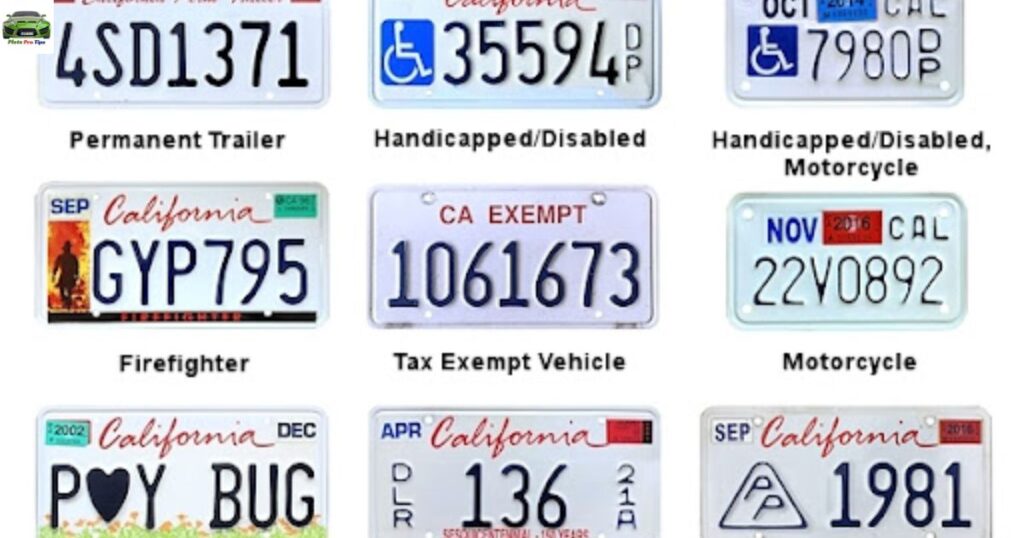
California offers a diverse range of license plate options, catering to different preferences and needs. Here are some of the most common types:
Standard Issue Plates
These are the basic plates issued by the DMV for most vehicles. They feature a sequential number combination and the iconic “California” inscription at the top.
Personalized Plates
For an additional fee, Californians can customize their plates with a unique combination of letters and numbers that holds personal significance. These plates are a popular way to express individuality on the roads.
Special Interest Plates
California offers various special interest plates, with a portion of the fees supporting specific causes or organizations. Some popular options include:
- Environmental Plates (Whale Tail, Coastal, and Lake Tahoe)
- Veterans Plates
- Memorial Plates (Honoring fallen officers, firefighters, and others)
- Collegiate Plates (Supporting California universities)
Disability Plates
Individuals with qualifying disabilities can obtain special plates or placards to access designated parking spaces and other accommodations.
Commercial Plates
These plates are issued to vehicles used for commercial purposes, such as transportation companies, delivery services, and contractors.
The History of California License Plates (1963-present)
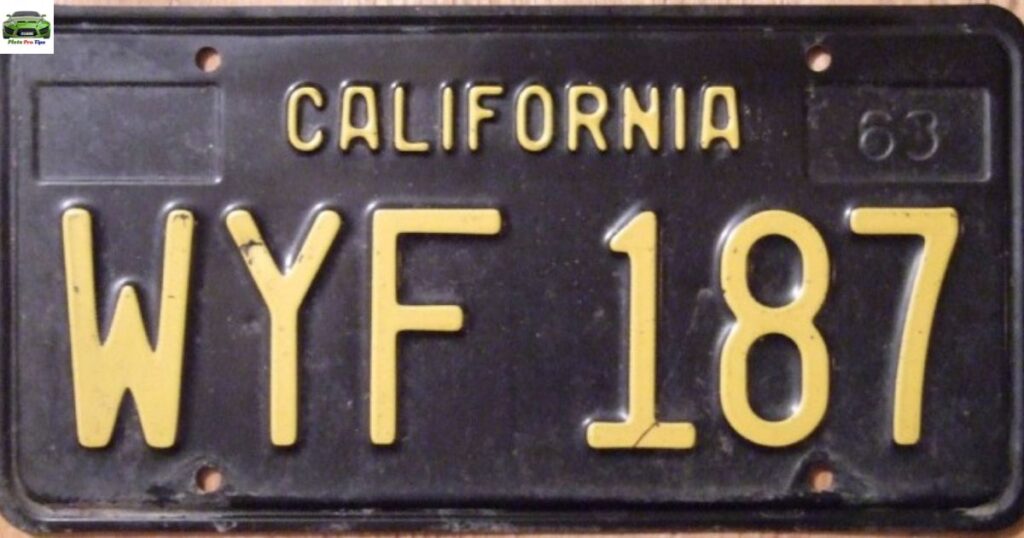
California’s license plates have undergone numerous design changes over the decades, reflecting the state’s evolving aesthetics and priorities. Let’s take a trip down memory lane:
1963-1969: Yellow and Black
These plates featured black characters on a yellow background, with the iconic “California” inscription at the top. They were among the first plates to incorporate a statewide slogan, “Sunshine Behind the Clouds.”
1970-1980: Blue and Yellow
Marking a departure from the previous design, these plates sported blue characters on a yellow background, with the state name in a stylized font.
1982-1986: Sunset Plates
The iconic “Sunset” plates featured a striking gradient design, with orange and red hues fading into yellow and white. These plates were a visual representation of California’s stunning sunsets.
1987-1996: Scenic Plates
Featuring a scenic landscape with mountains, a lake, and palm trees, these plates aimed to capture the diverse natural beauty of California.
1997-2004: Coast Plates
The “Coast” plates depicted a crashing wave and a stylized sun, paying homage to California’s iconic coastline and beaches.
2005-2009: Classic Plates
These plates returned to a more traditional design, with blue characters on a white background and the state name prominently displayed.
2010-2016: Green and Blue
Embracing an eco-friendly theme, these plates featured green and blue tones, symbolizing California’s commitment to environmental stewardship.
2017-present: Vintage Black and Yellow
The current plates pay homage to the classic 1963 design, with black characters on a yellow background and the iconic “California” inscription at the top.
As you can see, California’s license plates have evolved over time, reflecting the state’s diverse culture, natural beauty, and changing priorities. Each design holds a unique place in the state’s automotive history, making license plate collecting a popular hobby among enthusiasts.
Decoding California License Plate Numbers
While license plates may seem like a random jumble of letters and numbers, there’s actually a method to the madness. Understanding the meaning behind California’s license plate numbering system can be fascinating for those interested in the inner workings of the DMV’s processes.
Here’s a breakdown of how the numbers on California license plates are structured:
- Series Number: The first two digits (or single digit for older plates) represent the series number, which is assigned sequentially to each plate series issued.
- Type Code: The next one or two letters indicate the type of vehicle for which the plate is issued. For example, “A” signifies a passenger vehicle, “C” represents a commercial vehicle, and “M” stands for a motorcycle.
- Sequential Number: The remaining digits are a sequential number assigned to each individual plate within a particular series and type.
For example, a passenger vehicle plate with the number “8ABC123” would break down as follows:
- “8” is the series number
- “A” indicates a passenger vehicle
- “BC123” is the sequential number for that particular plate
This numbering system helps the DMV keep track of plate assignments and vehicle types, ensuring efficient record-keeping and organization.
Personalized Plate Combinations
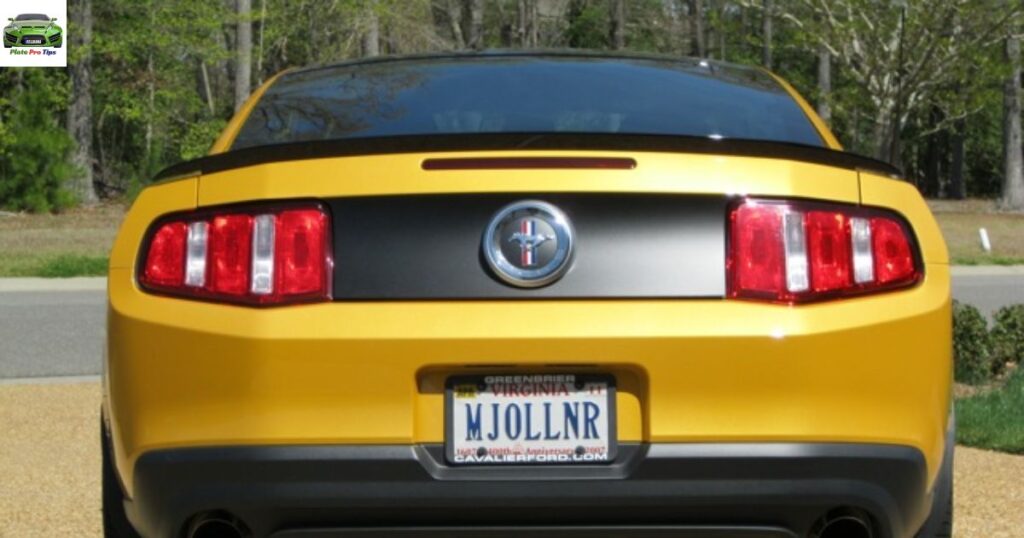
For those seeking a more personalized touch, California offers the option to customize license plate combinations. While certain restrictions apply, such as prohibiting offensive or misleading combinations, personalized plates allow vehicle owners to express their individuality on the roads.
Popular personalized plate choices often include:
- Initials or names
- Vehicle makes or models
- Hobbies or interests
- Occupations or alma maters
- Clever phrases or inside jokes
To obtain a personalized plate combination, Californians can check availability and submit their requests through the DMV’s online services or in-person at a local office. Keep in mind that personalized plates come with an additional fee on top of the standard registration costs.
Collector’s Corner: Rare and Vintage Plates
For enthusiasts and collectors, California’s rich history of license plate designs has spawned a vibrant market for rare and vintage plates. These coveted items can fetch considerable prices, particularly if they’re in excellent condition or feature unique characteristics.
Some of the most sought-after California plates among collectors include:
- 1963-1969 Yellow and Black Plates: The original “Sunshine Behind the Clouds” plates, particularly those with low sequential numbers.
- Porcelain Plates: Issued in the early 1900s, these porcelain plates are incredibly rare and valuable.
- Low-Number Plates: Plates with sequential numbers under 100 or featuring repeating or sequential patterns (e.g., “123456”) are highly prized.
- Specialty Plates: Plates issued for specific events, organizations, or purposes, such as World War II veteran plates or plates commemorating the Golden Gate Bridge’s opening.
While collecting license plates can be a fascinating hobby, it’s essential to ensure any transactions involving vintage or rare plates comply with applicable laws and regulations.
FAQ,s
How many types of license plates does California have?
California offers various types of license plates, including standard plates, specialized plates, personalized plates, and vintage plates, catering to different preferences and needs.
What plate is in California?
California primarily uses alphanumeric license plates, which consist of a combination of letters and numbers assigned to vehicles registered in the state.
How many digits is a CA plate?
A standard California license plate typically consists of seven characters, comprising a combination of letters and numbers.
What are black license plates in California?
Black license plates in California are specialty plates that evoke a retro design reminiscent of the state’s historic plates from the 1960s. They are available for certain vehicle types and signify a classic look.
What 2 plates are in California?
California offers a wide range of license plates, but two notable types are the standard issue plates, which are alphanumeric and assigned by the Department of Motor Vehicles, and the specialized plates, which include personalized options and designs for various causes and interests.
Conclusion
California takes great pride in its iconic license plates. The state offers many cool options beyond the standard plates. You can get personalized, special interest, disability, or commercial plates. The vintage black and yellow design is a nod to California’s classic 1963 plates.
No matter which type you choose, make sure to keep your registration current. Renew on time to avoid penalties. Follow all DMV rules for displaying plates properly. California license plates identify your vehicle and allow you to drive legally. Having valid plates shows you follow the law and take pride in the Golden State’s roadways.

I’m Shoaib, a passionate blogger with 5 years of experience. I love writing about tech. My goal is to share useful information and insights with you. Explore my website to discover exciting content on various topics!
